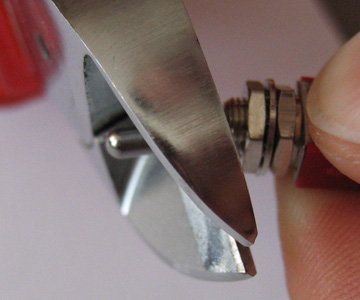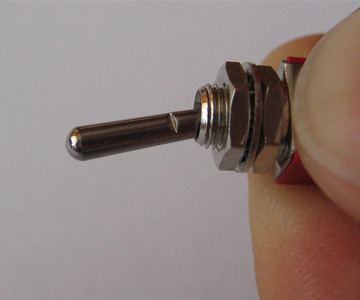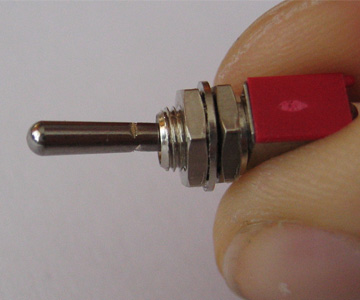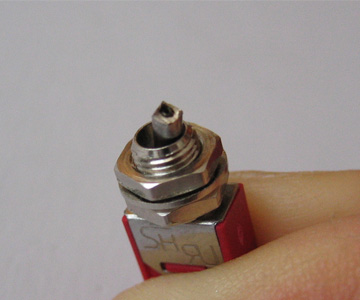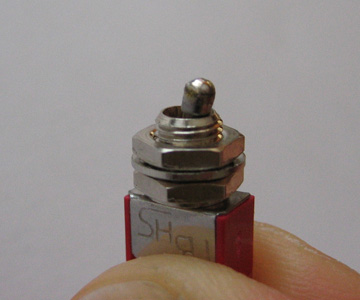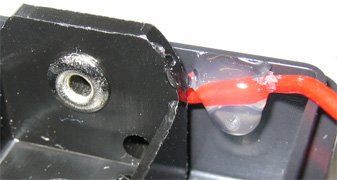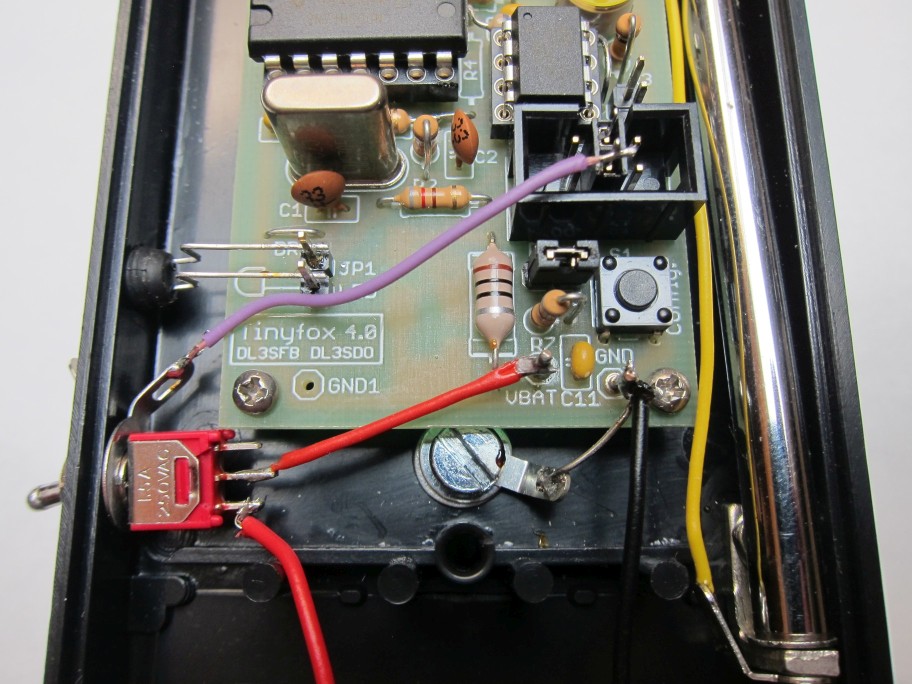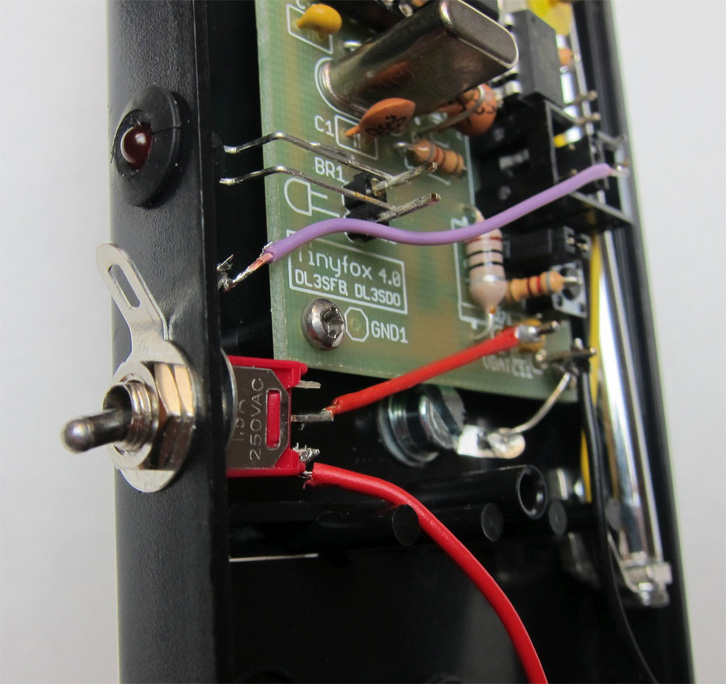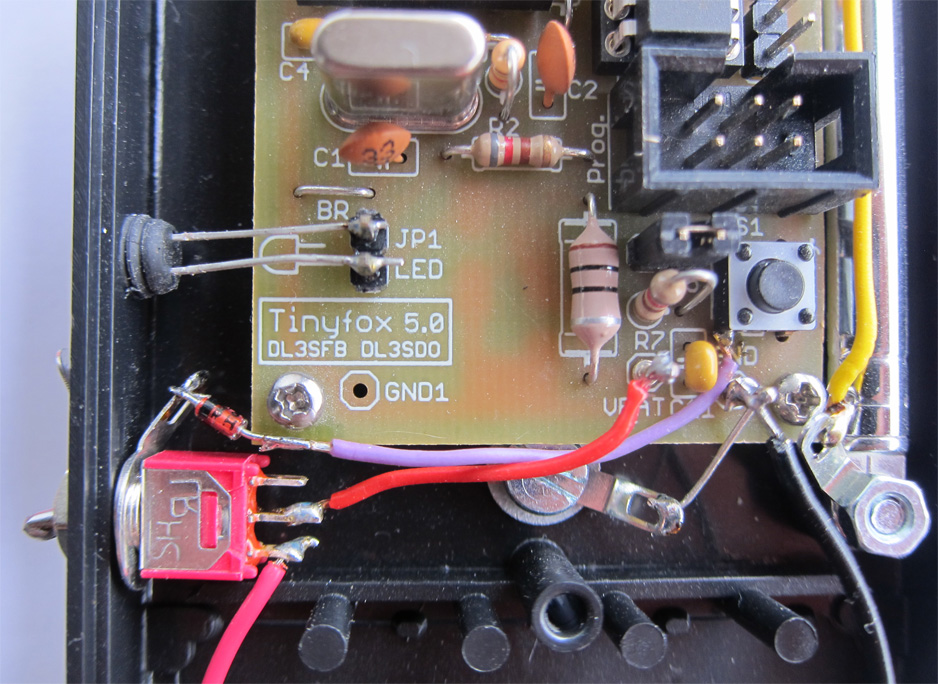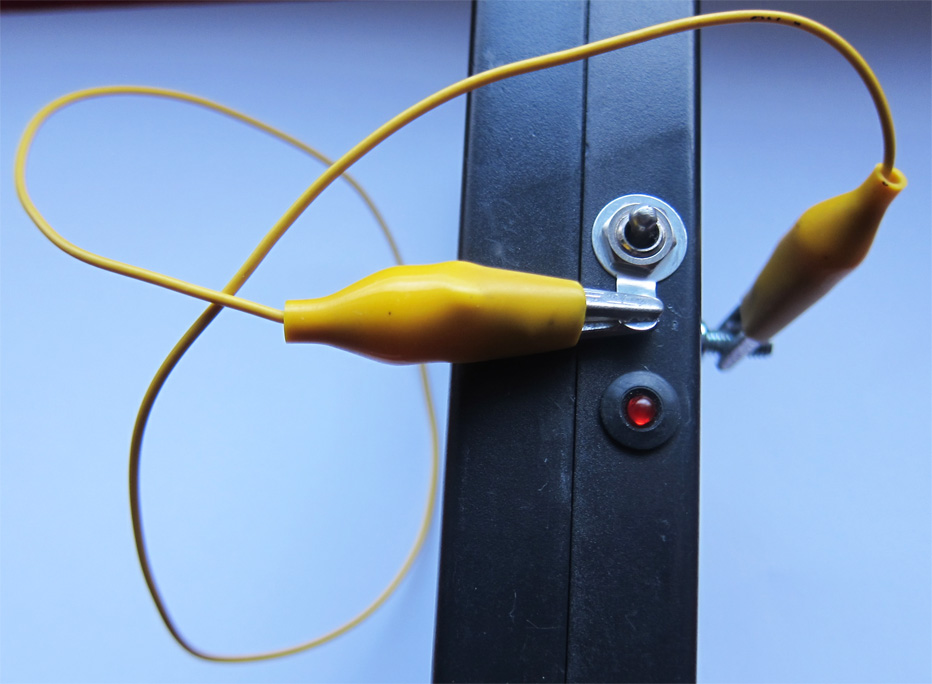- There is a screw hole in the Tinyfox housing, just above the battery case. Drill a 4 mm diameter hole 6.5 mm above the screw hole.
- A small plate should be placed between the housing and the earthing rod, e.g. a small aluminium plate 22x20x2 mm. Drill a 4 mm hole in the plate 11 mm from each side and 4 mm from one end.
- Slip an eyelet and a washer on an M4x20 screw and insert the screw through the 4 mm hole from the inside of the housing. Mount the plate on the outside of the housing such that the plate will not cover the screw hole and fix it with an M4 self-locking nut.
- A sheet steel tent peg, e.g. 24 cm long, can be used as earthing rod. Drill a 4 mm hole in the tent peg, e.g. 9 cm away from the upper end. When selecting a tent peg make sure it is sufficiently rounded, such that the self-locking nut fits within the curve and the tent peg lies on the small plate instead of on the nut.
- The tent peg is slipped on the screw and fixed by a M4 wing nut, which allows for easy mounting and dismounting.
- If you want an electrical earthing the eyelet is connected to the transmitter's ground, e.g. at the solder pin for the battery ground. By electrically earthing the transmitter the matching is changed. Therefore if the earthing rod is installed after the transmitter was already built up and matched, it needs to be rematched.
|
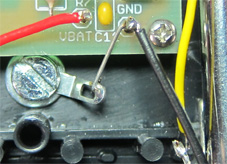
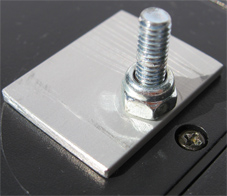
|
